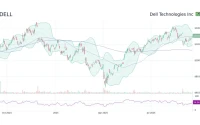The launch of a new crypto protocol often follows a predictable, and frankly, tired script. A slick website appears, a whitepaper full of impenetrable jargon is published, and a token trickles onto a few decentralized exchanges. The launch of Falcon Finance, however, was something else entirely. It was less a debut and more a coordinated, high-velocity market insertion.
On September 26, 2025, Falcon Finance was unveiled not with a whisper, but with a declarative statement from the industry’s largest megaphone: it was the 46th project on Binance HODLer Airdrops. This wasn't a tentative first step; it was a coronation. The numbers that followed were precise and deliberate. Binance allocated 150 million FF tokens (a tidy 1.5% of the total 10 billion supply) to users who had subscribed BNB to specific yield products between September 14th and 16th. This wasn't just a giveaway; it was a targeted distribution to the exchange's most committed capital base.
Three days later, on September 29th at 13:00 UTC, the machine fully engaged. FF began trading on Binance Spot, complete with the Seed Tag—a designation that serves as both a mark of novelty and a subtle warning of volatility. Simultaneously, in a clear signal of coordinated support, Bybit opened its own FF/USDT market at the exact same moment. The rollout was meticulously timed, with Bybit’s deposits opening five hours prior to trading, ensuring liquidity was primed and ready. The subsequent launch of an 8 million FF prize pool on Bybit’s Launchpool and a 1 million FF Token Splash was not an afterthought; it was the second stage of the rocket, designed to sustain initial momentum.
The market’s reaction, at least in terms of locked capital, was immediate. The project’s one-month beta test had reportedly attracted over $100 million in Total Value Locked (TVL). While impressive, the source and composition of this initial TVL remain opaque—a common issue with pre-launch metrics. Still, the signal was clear: Falcon Finance had arrived with institutional-level backing and a launch strategy that left little to chance.
An Elegant Solution to a Self-Inflicted Problem
Deconstructing the Engine
Beneath the polished exterior of the launch lies a complex financial engine. Falcon Finance presents itself as a universal collateralization protocol. In simple terms, it’s a decentralized pawn shop where users can deposit a wide array of assets—from BTC and ETH to tokenized U.S. Treasuries—and mint a synthetic dollar, USDf, against them.
The mechanics are standard for such systems. Depositing stablecoins like USDC allows for a 1:1 minting ratio, while more volatile assets require overcollateralization to buffer against price swings. The protocol’s architecture incorporates institutional-grade security measures: mandatory KYC/AML, independent custodians, and multi-party computation (MPC) wallets. This is a direct appeal to a more risk-averse, compliance-conscious segment of the market.
The real product, however, isn't just the USDf stablecoin. It’s the yield. When a user stakes their freshly minted USDf, they receive sUSDf, a yield-bearing token. The value of sUSDf is designed to appreciate over time as the protocol’s treasury deploys its assets into a portfolio of strategies—arbitrage, staking, and liquidity provision. Positions can even be tokenized as ERC-721 NFTs, representing fixed-term stakes. It’s a multi-layered system of financial derivatives built on top of a collateral base.

This brings us to the native FF token itself, the very asset distributed in the airdrops. Its utility is woven directly into the protocol's incentive structure. Holding and staking FF is intended to grant users governance rights, higher APYs on their sUSDf positions, and lower collateralization requirements for minting USDf. It is the grease that lubricates the entire machine. The tokenomics specify a maximum supply of 10 billion, with an initial circulating supply of roughly a quarter of that—to be more exact, 23.4% or 2.34 billion tokens.
And this is the part of the model that I find genuinely puzzling. An initial float of that size, distributed heavily through airdrops and launch pools, creates immense initial sell pressure. The design of the FF token's utility—staking for better terms—is the direct countermeasure to this pressure. The protocol is, in effect, creating a problem (a massive, inflationary token distribution) for which it immediately sells the solution (staking that same token to extract more value from the system). It’s a fascinatingly circular piece of economic engineering. The success of USDf as a stable store of value becomes intrinsically linked to the demand for FF, a speculative governance token.
My analysis suggests that the primary objective of this intricate launch was not merely to introduce a new stablecoin. It was to bootstrap a massive, engaged user base and embed the FF token at the core of the protocol's value proposition from day one. The airdrop wasn't just a marketing expense; it was a strategic distribution of governance and influence, aimed at creating a loyal cohort of stakeholders who are incentivized to stake, participate, and drive demand for the very token they received.
The question, then, is whether the underlying structure can support the weight of these ambitions. The protocol’s risk management disclosures mention an on-chain insurance fund, hedging strategies, and both automated and manual monitoring. These are necessary, but their effectiveness in a true black swan event is theoretical until it is tested. The acceptance of a broad range of collateral, including tokenized real-world assets, introduces layers of complexity and risk—correlation risk, oracle risk, and custodial risk—that are not present in simpler, crypto-native collateralized debt protocols.
The long-term trajectory will depend on factors far outside the control of a clever launch strategy. The specter of stablecoin regulation looms large, and the protocol’s multi-chain future is a promise, not a reality. The ultimate utility of USDf will be determined not by staking rewards within its own ecosystem, but by its adoption and integration across the wider DeFi landscape. For now, Falcon Finance has executed a textbook market entry. It has acquired users, distributed its token, and generated significant initial value. But the most difficult work—proving resilience, maintaining the peg, and managing risk through a full market cycle—has only just begun.
---
The Engineered Incentive
My final assessment is this: The launch of Falcon Finance was less about creating a stablecoin and more about creating a self-perpetuating demand loop for its governance token. The entire apparatus—the airdrop, the launch pools, the staking rewards—is a masterfully engineered system to counteract the immense inflationary pressure of its own initial token distribution. The protocol's success is therefore a high-stakes wager on its ability to convince thousands of airdrop recipients to become long-term stakers rather than short-term sellers. The stability of USDf is almost a secondary concern to the more immediate challenge of managing the speculative velocity of FF. It is a brilliant piece of financial architecture, but it's one built on a foundation of carefully balanced, and highly fragile, incentives.
Reference article source:









